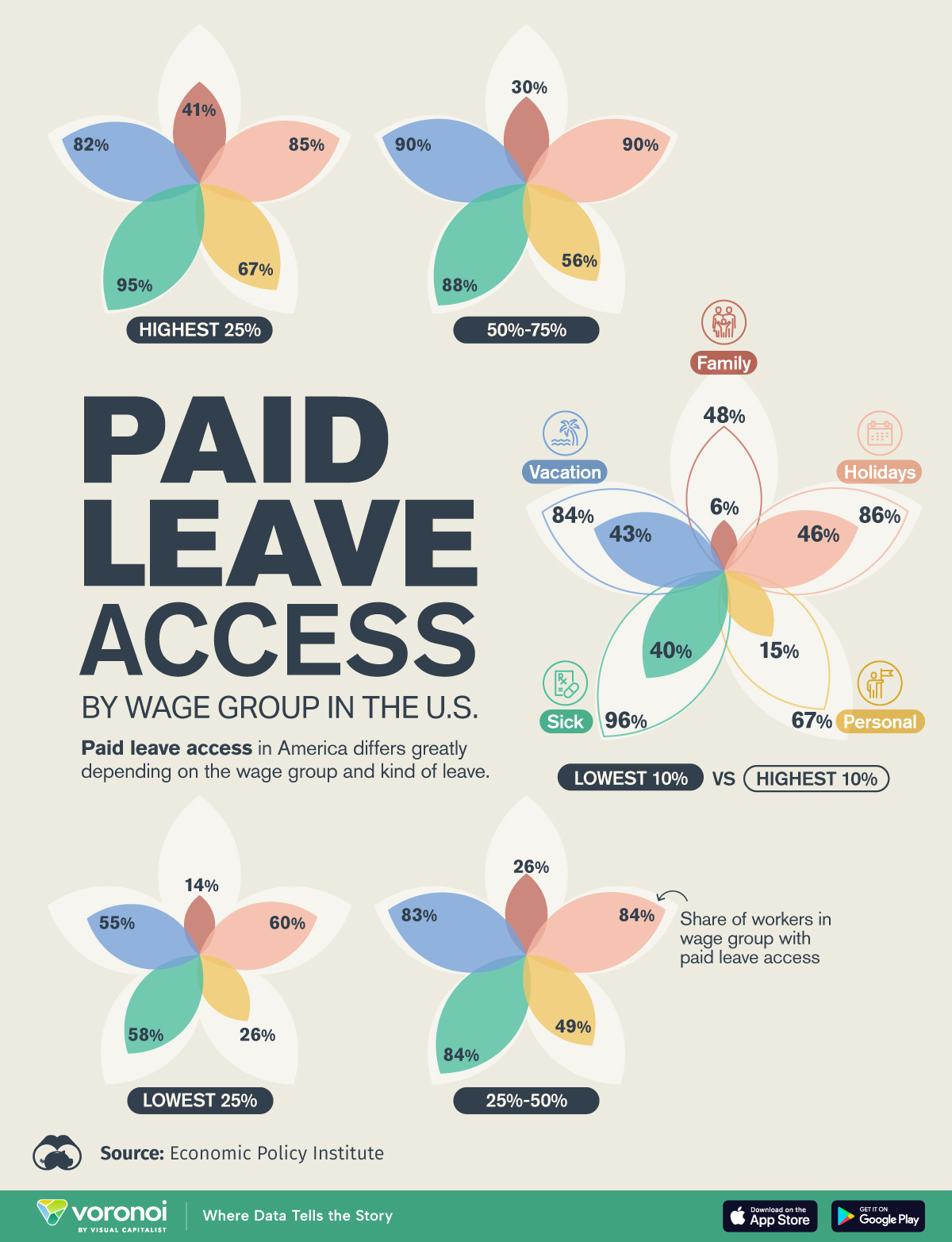![]()
See this visualization first on the Voronoi app.

Use This Visualization
Access to Paid Time Off by Wage Group in America
This was originally posted on our Voronoi app. Download the app for free on iOS or Android and discover incredible data-driven charts from a variety of trusted sources.
Today, the U.S. is a clear outlier in mandated paid leave policies, earning it the moniker “no-vacation nation”.
Across the 21 richest countries in the world, the U.S. is the only country without a national paid leave law. Moreover, it is one of two countries across this group without mandated paid holidays. By contrast, the European Union guarantees 20 days of paid time off per year, while workers in countries such as Mexico, Afghanistan, and Thailand are also entitled to paid vacation days.
This graphic shows the percentage of U.S. workers with access to paid leave by wage group, based on data from the Economic Policy Institute.
Wide Disparities in Paid Time Off Benefits
In America, 27 million workers do not have access to two weeks of paid vacation per year.
This disproportionately affects the lowest income workers, which have far lower access to paid leave than all other wage groups. To compensate for the absence of a national law, 10 states have enacted mandatory paid family leave programs. Additionally, four states are rolling out programs in 2026.
Below, we show the share of workers in each income group with access to five types of paid leave as of March 2023:
| Leave Benefit | Lowest 10% | Lowest 25% | Second 25% | Third 25% | Highest 25% | Highest 10% |
|---|---|---|---|---|---|---|
| Family | 6% | 14% | 26% | 30% | 41% | 48% |
| Holidays | 46% | 60% | 84% | 90% | 85% | 86% |
| Personal | 15% | 26% | 49% | 56% | 67% | 67% |
| Sick | 40% | 58% | 84% | 88% | 95% | 96% |
| Vacation | 43% | 55% | 83% | 90% | 82% | 84% |
As we can see, just 6% of the lowest income earners have access to paid family leave.
Most often, this is used after childbirth or for caring for the household. While access jumps to 48% across the highest wage bracket, it lags behind other policies by a wide margin. For perspective, the U.S. is the only country in the OECD without mandatory family paid leave at the federal level. In comparison, the OECD average for paid maternity leave is 51.9 weeks.
When it comes to paid vacation leave, stark differences are also present across wage groups.
While 55% of the lowest earners have access to paid vacation, this increases to 84% in the top wage bracket. Overall, 77% of U.S. workers have access to paid vacation, with the highest share in management, business, and financial occupations.
Learn More on the Voronoi App ![]()
To learn more about this topic from a global perspective, check out this graphic on the countries with the most paid time off in the world.
The post Access to Paid Time Off by Wage Group in America appeared first on Visual Capitalist.